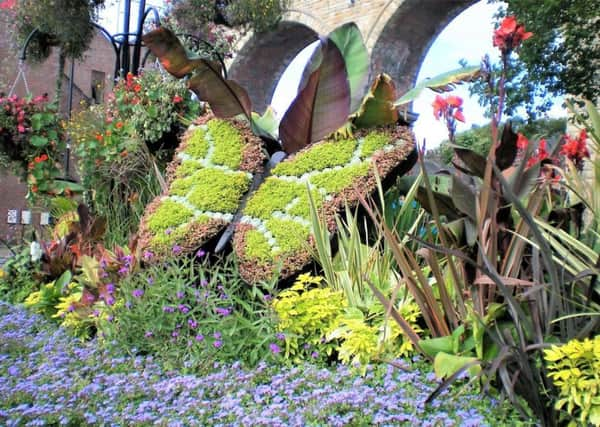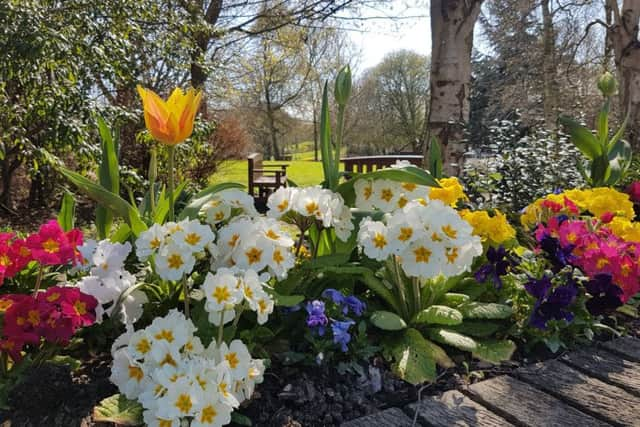How the North East shone in RHS Britain in Bloom awards
This article contains affiliate links. We may earn a small commission on items purchased through this article, but that does not affect our editorial judgement.


Durham won the small city category and was awarded a gold medal, with Morpeth and Ponteland in Northumberland also clinching gold and Tanfield in County Durham earning a silver gilt.
The Northumbria entries, which cover an area from the Borders to North Yorkshire, battled what judges have declared the toughest year on record, with communities fighting to keep blooms alive.


Advertisement
Hide AdAdvertisement
Hide AdThe four finalists were chosen following success in Northumbria in Bloom the previous year to compete against 76 groups from across the UK in 12 categories.
Durham competed against Derry in Northern Ireland, Rochdale and Shrewsbury to take the top title, impressing the RHS judges with its creative floral displays, standout horticulture and community partnerships, including at the cathedral, city centre roundabouts and Wharton Park.
Morpeth wowed with vibrant planting at Sanderson Arcade, pockets of wildflowers and a restored floral clock with working mechanism in Carlisle Park.
Ponteland was praised for its “wonderful” community spirit, sensory garden and poppy display to commemorate the First World War centenary.


Advertisement
Hide AdAdvertisement
Hide AdFirst-time finalist Tanfield was congratulated on its achievements over the past five years, thanks to the community’s “infectious enthusiasm and passion” for their village.
Finalists are judged on their horticultural achievement, community participation and environmental responsibility with the RHS judges visiting communities from the end of July after months of hot and dry weather.
Darren Share, chairman of the RHS Britain in Bloom, judges, said: “This year’s finalists faced the most challenging conditions the competition has ever seen, with much of the country under snow and ice at the start of spring followed by the joint-hottest summer on record.
“That so many groups have walked away with top medals is remarkable and a reflection of communities’ hard work, ingenuity and horticultural know-how.”
Advertisement
Hide AdAdvertisement
Hide AdThe full results can be found online at www.rhs.org.uk/bloomawards2018GET IN TOUCH
l For more information, plus cook what you grow, recipes, environmental news and more, log on to the website at www.mandycanudigit.com – which is also now smartphone friendly. You can also follow Mandy on Twitter @MandyCanUDigIt or you can like me on my Facebook page at Mandycanudigit
Jobs to do this weekend
Tulips can now go in. Species tulips naturalise, but showier varieties are best treated as bedding and replaced every year.
Plant bare-root deciduous hedging plants, trees and shrubs promptly, before they dry out. They can be heeled in for a short period if weather conditions are bad.
Advertisement
Hide AdAdvertisement
Hide AdLightly prune bush roses to prevent wind rock, as they are usually shallow rooted. Climbing roses should be pruned now at the very latest.
Put fallen leaves on the compost heap or into separate pens for rotting down into leaf mould.
Plant lilies in pots to be brought innext spring to force them into an early display or left outside to flower naturally in summer.
Apply an autumn mulch to protect plants that are borderline hardy such as Agapanthus, Kniphofia (red hot pokers) and Phygelius. The plants’ own leaves, e.g. Kniphofia, can be tied up and used as protection for the crowns underneath.
Advertisement
Hide AdAdvertisement
Hide AdLift and store dahlias, cannas and tuberous bedding begonias hit by the first frosts.
In mild weather, weeds will still appear. Hoe regularly to keep them in check.
Group tropical houseplants on trays of wet gravel for more humidity when the central heating comes on.
Pelargoniums (geraniums) can be cut back, de-leaved, watered less, not fed, and kept relatively dormant and just moist, over the winter. Re-potting, watering and feeding in the spring will bring them back into active growth. They should be kept at around 10°C (50°F) while dormant, although mine have endured much lower temperatures than that.
Advertisement
Hide AdAdvertisement
Hide AdCheck any bulbs (e.g. hyacinths and ‘Paper White’ daffodils), being forced in darkness into early growth. When they have made about 2.5cm (1in) growth, bring them into a light, cool room or frost-free greenhouse to grow on. When flower buds appear, they can be brought into warmer rooms.